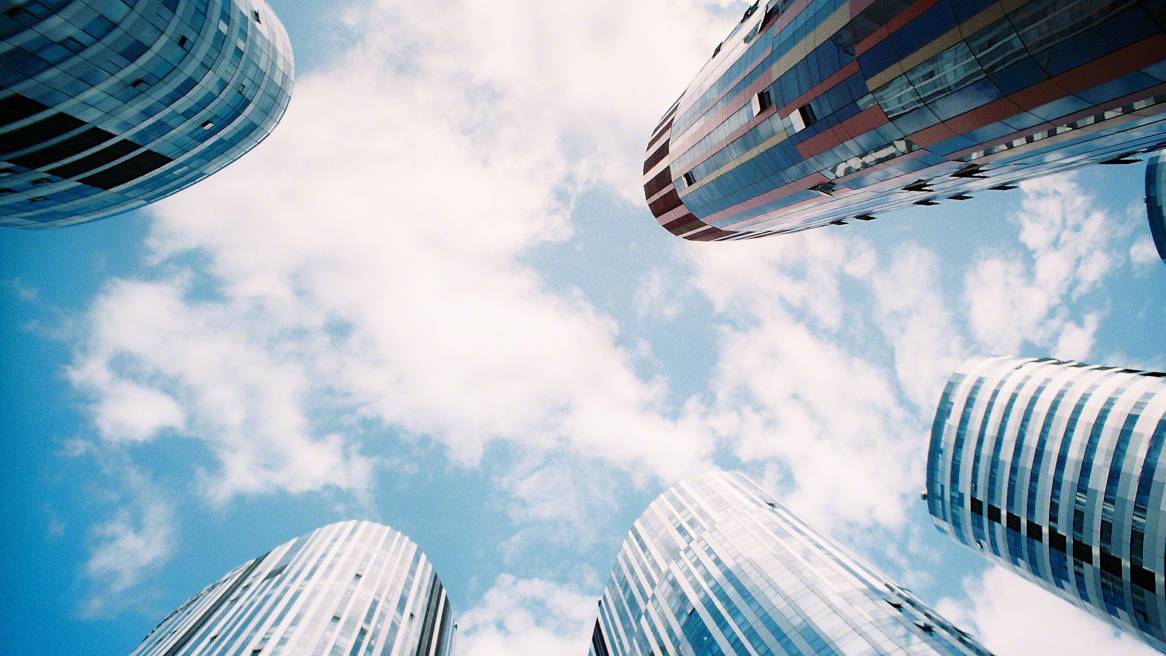Inside China’s C-Suite
Setting the Stage for Innovation
Businesses in China are at a crossroads where traditions and new opportunities intersect: During the next three years, the founding CEOs of three million private enterprises are handing over the reins of leadership to the next generation.
As these experienced, trailblazing leaders pass on their knowledge to next-generation successors, both parties know that today’s Chinese leaders face a whole new set of challenges: growth in a domestic economy undergoing major transformation and a global market where competition is intense.
So it’s not surprising that innovation-driven development is core to the Chinese government’s five-year strategic plan released in October 2015. That intention was on prominent display during the first official visit of China’s President Xi Jinping to the United States the month prior when he and other Chinese CEOs met with Silicon Valley’s top tech CEOs.
“Like their counterparts throughout the world, China’s progressive leaders are pushing their organizations to be more global, more agile and more innovative,” reports Elise Valoe, a Steelcase senior design researcher who was part of a team that went inside the executive suites of companies in six Chinese cities, conducting interviews and observing how Chinese CEOs work today—and gaining insights into how they aspire to work going forward. As follow-up to this study, Steelcase sponsored a competition, inviting designers throughout China to address the emerging needs of CEOs by creating new concepts for private offices that would enable them to navigate changing market forces and strengthen innovation in their organizations.
preserving traditions, reflecting brand
More than simply a change in strategy, the accelerating drive for innovation requires broader access to information, more collaboration and greater agility. China’s CEOS are keenly aware that developing competitive innovation in their organizations means evolving certain cultural traditions, such as business interactions that prioritize maintaining harmony and building guanxi, the system of influential personal relationships that have long facilitated business in China.
Of course, trusting relationships remain essential for business success everywhere, but in today’s global context CEOs need new skills, tools and technologies to communicate and collaborate more rapidly and effectively, in person as well as when working with global counterparts whom they maybe haven’t met face to face. In fact, nearly double the amount of CEOs in China view global thinking as a top leadership quality, compared with Europe and North America, according to the IBM Global CEO survey.
But, as in many countries, CEO offices in China are often traditional, spacious suites designed to showcase both the company’s and the executive’s brand with less focus on addressing the needs or the challenges that leaders are facing. According to the Steelcase study, next-generation leaders are questioning this paradigm and looking for work environments that support new ways of working and foster greater innovation.
Valoe explains: “In our research, we found that CEO offices in China are stately and occupy a significant amount of real estate for meeting with clients. Yet, in most of the offices we studied, there was little support for effective collaboration with their co-located executive teams, and even less for collaborating with distributed colleagues and partners. This is key for innovation to happen.”
CEOs are beginning to view traditional furnishings, such as an expansive executive desk or a large conference table, as constraining and reinforcing a role of decision-maker and instructor. They’re finding that, without support for making information visible, hosting in their offices is limited to couch or tea-table conversations. Instead, CEOs are now realizing the need for a more diverse range of work settings, including spaces equipped with whiteboards and technology to facilitate information-sharing and collecting insights in a rapid and cohesive way.
As next-generation leaders spend more time engaged in generative collaboration with their leadership teams and drive to embed innovation throughout their organizations, they require work settings that are much harder working than most traditional CEO offices.
four ways to amplify performance
Based on their findings, Steelcase researchers have identified several design opportunities as key:
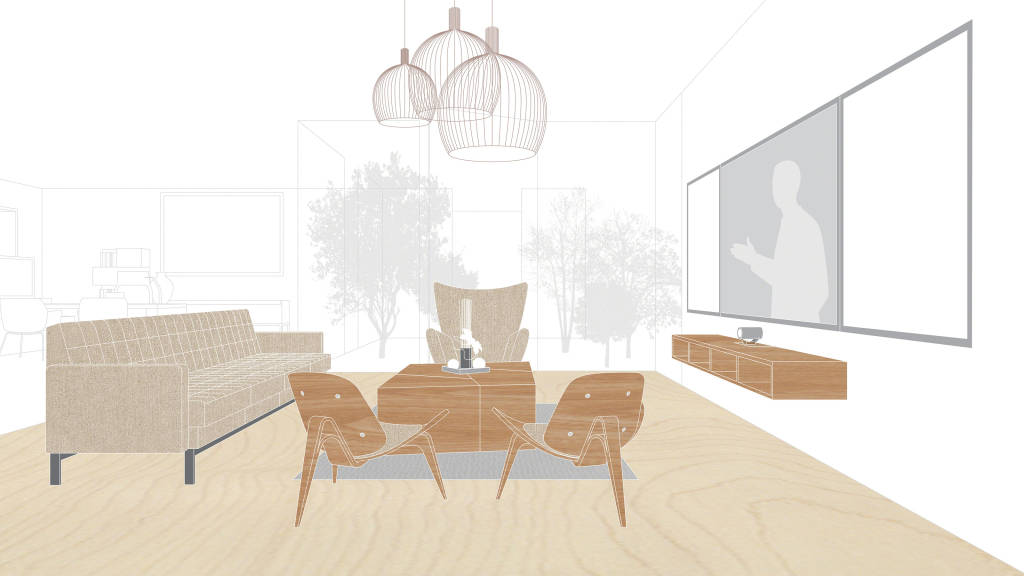
Create new way of hosting and networking with clients and partners.
In-office hosting can increase CEO effectiveness by supporting traditional face-to-face meetings. Integrating videoconferencing capabilities brings distributed guests into the executive domain, enabling the CEO to gain trust and guanxi virtually as well as in person, while also reducing the time drain of meeting and socializing in other settings.
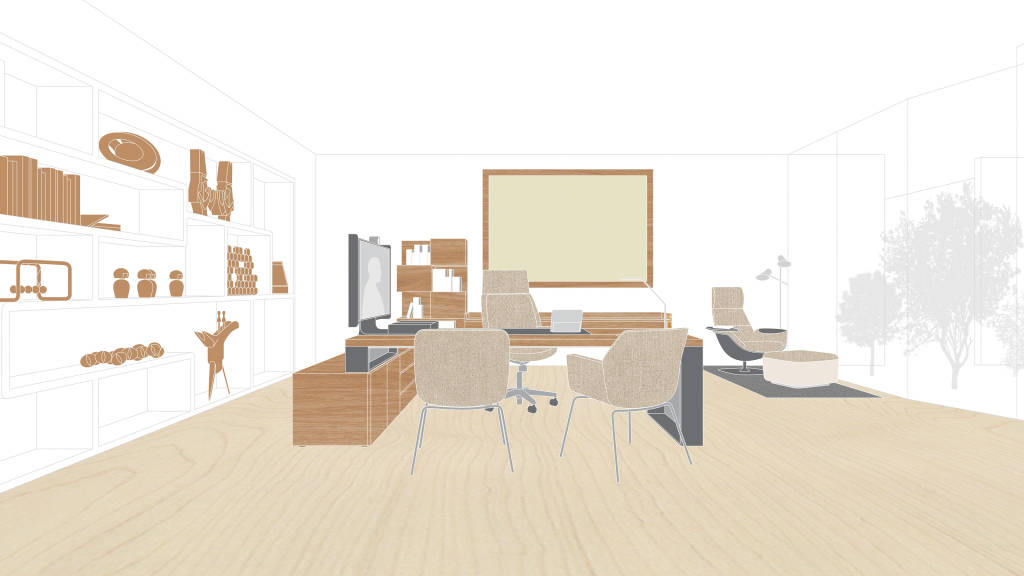
Design for transparency and learning.
To stimulate inspiration and amplify learning, integrated advanced technologies within the more traditional executive desk setting can support intensive one-on-one mentoring sessions and provide opportunities for executives to gain information and insights from experts and peers, without the time commitment and expense of travel.
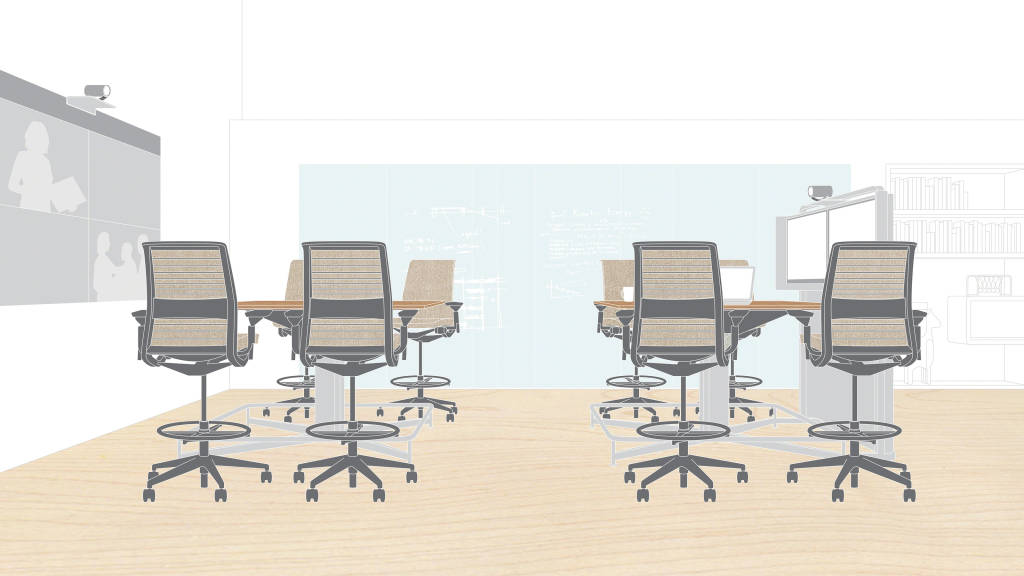
Foster collaboration, co-creation and fluid communication with staff.
Replacing or supplementing the iconic executive desk with settings that remove distance between the CEO and others allows for more relaxed and insightful conversations. Integrated technology brings new levels of collaboration into the executive suite, encouraging active participation and cross-hierarchy communication with collocated and distributed members, giving participants equal access to tools and enabling information and ideas to be shared quickly and seamlessly.
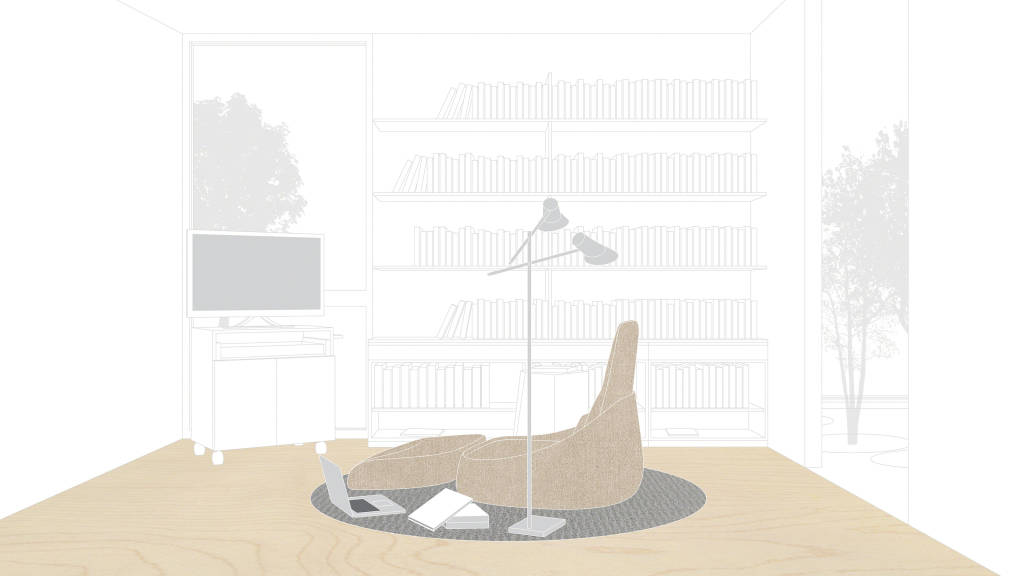
Support CEO stamina and wellbeing.
With CEOs’ schedules full and increasingly fragmented, rejuvenation is essential for performing at one’s best. Replace the traditional CEO nap room with a retreat space designed to support lounging postures and a range of revitalizing activities.
Designing the next Evolution of China’s CEO Offices
To stimulate new thinking about work environments for China’s next-generation CEOs and build on key insights from its research, Steelcase sponsored a design competition in China to create the next evolution of leadership spaces.
A total of 13 submissions were evaluated on a 100-point scale, including factors such as how well they exhibited evidence-based reasoning to solve for user needs as well as overall creativity.
Selecting the winners was no easy task. Submissions reflected “not just one new idea, but new thinking and new solutions,” says Yao Yingjia, contest judge and vice president and chief designer at Lenovo in China. Adds judge Tony Wang, design director, IDEO China: “All the participants really considered the wellbeing of the potential client, not just the physical needs but also how the space could affect their mental states.”
While each submission was unique, “They all had elements that challenged conventional thinking for all executives, but especially for Chinese executives who are often caught in succession scenarios between the more traditional world of the family or the existing context of the company and the progressive way they want to drive the company forward,” says Michael Held, design director, Steelcase Asia Pacific and the third judge for the competition. “Each submission brought data, analysis and research elements to life, translated into an actual space and actual applications that would support a CEO to perform in a very competitive world and yet, at the same time, represent the company and their own personality and brand. That was a really important aspect of the designs.”
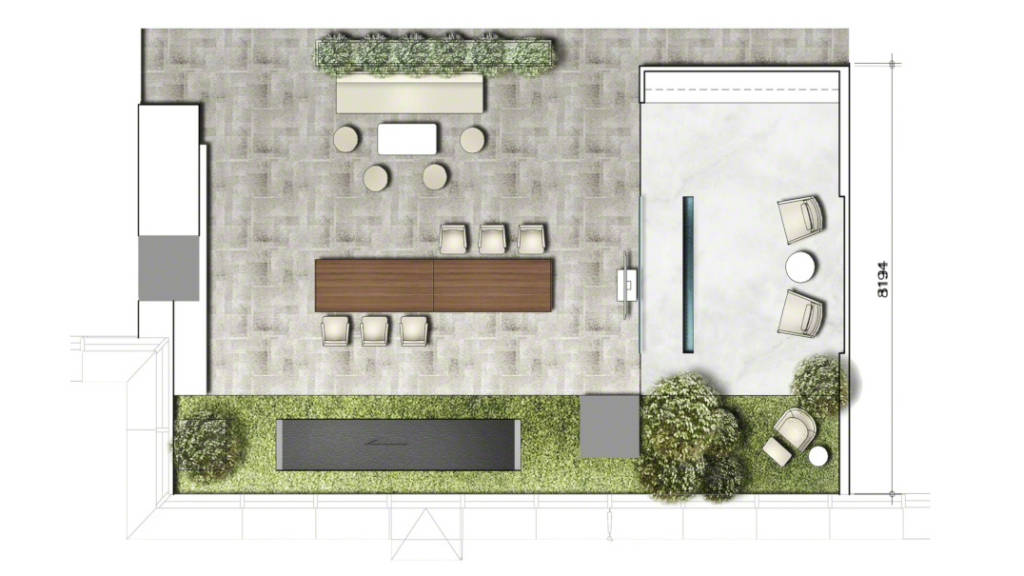
This winning design includes a floor-integrated walking conveyor for side-by-side strolls, a soothing indoor waterfall and strategic use of large-scale greenery to encourage movement and bring nature in.
The winning entry by Robarts Spaces Beijing reflects a deep understanding of the changing nature of CEOs’ needs and the settings in which creativity and innovation are most likely to occur. Because studies have shown that people come up with more creative ideas after walking or exposure to nature, their design includes a floor-integrated walking conveyor for side-by-side strolls, a soothing indoor waterfall and strategic use of large-scale greenery to bring nature in. The business benefits of teleconferencing is another key consideration embedded in their design. A central collaboration area is well equipped with a large, high-definition monitor, and artwork on the opposite wall provides a beautiful backdrop for videoconferencing sessions. Adjustable-height tables and an adjacent whiteboard encourage active, sit/stand meetings.
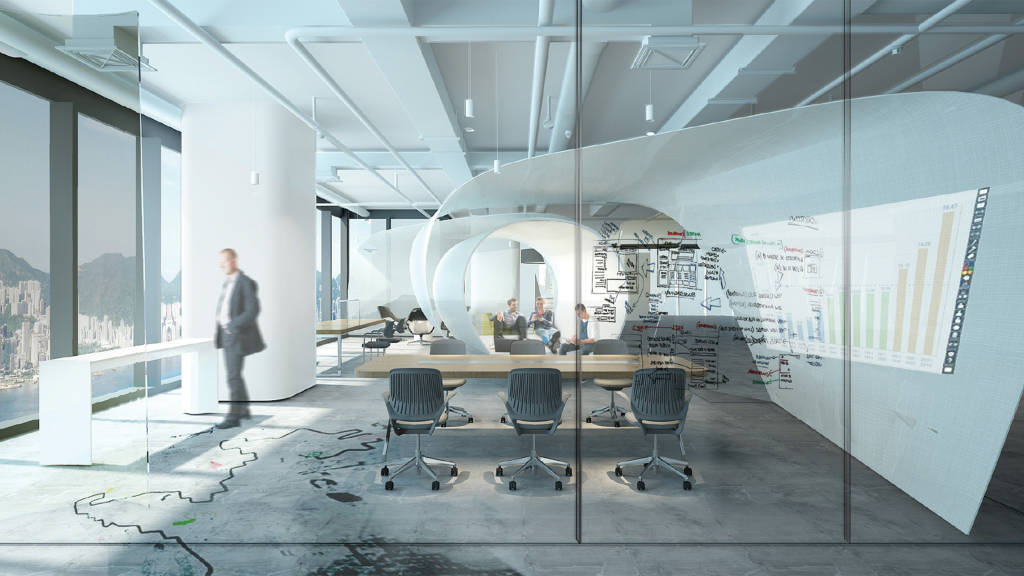
Instead of walls, Gensler uses curved glass screens and furniture to dramatically define spaces for collaboration, focus and socializing.
Second-place winner Gensler Shanghai submitted a progressive, completely open design. Instead of being separated and enclosed by walls, areas for collaboration, focus and socializing are dramatically defined with curved glass screens and furniture placements. When privacy is required, a central “pod” offers a protected environment and a temporary retreat for meditation and naps.
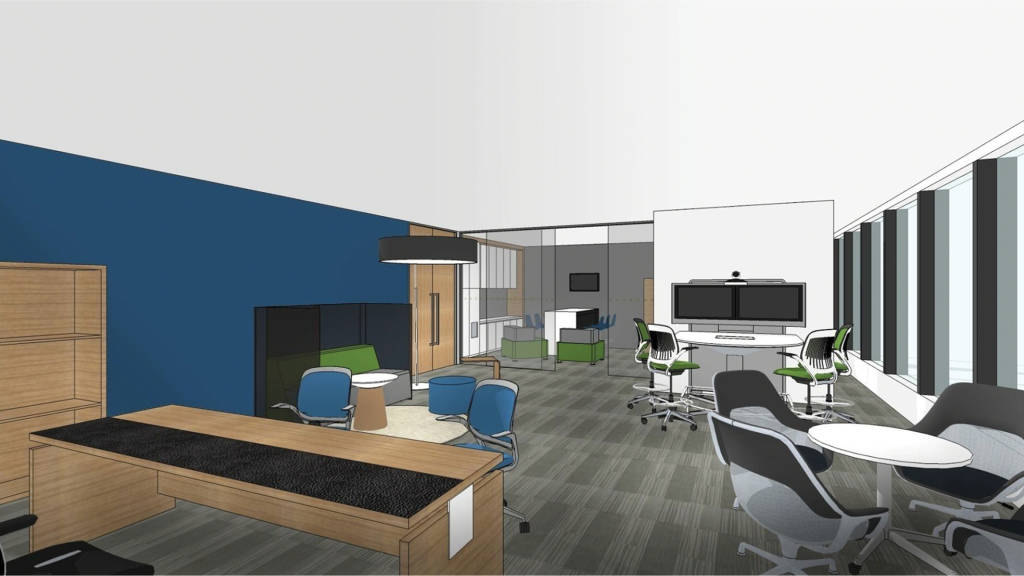
This design retains traditional elements while also reflecting the growing importance of technology integration, transparency and more collaborative processes.
Bridging the gap between past and emerging business cultures, AGIA Group China, Shanghai, the third-place winner, offered a design that retains traditional elements while also reflecting the growing importance of technology integration, transparency and more collaborative processes. To convey and encourage CEO accessibility, the main entrance to the suite features a collaborative setting with a contemporary Chinese timber-patterned screen carefully situated to provide both transparency and shielding. In the interior, a technology-rich collaborative lounge setting creates a hospitable environment for informal discussions, brainstorming, teleconferencing or relaxed hosting. There’s also a setting for more formal meetings and videoconferencing as well as a more enclosed inner sanctum for resting or private conversations.

